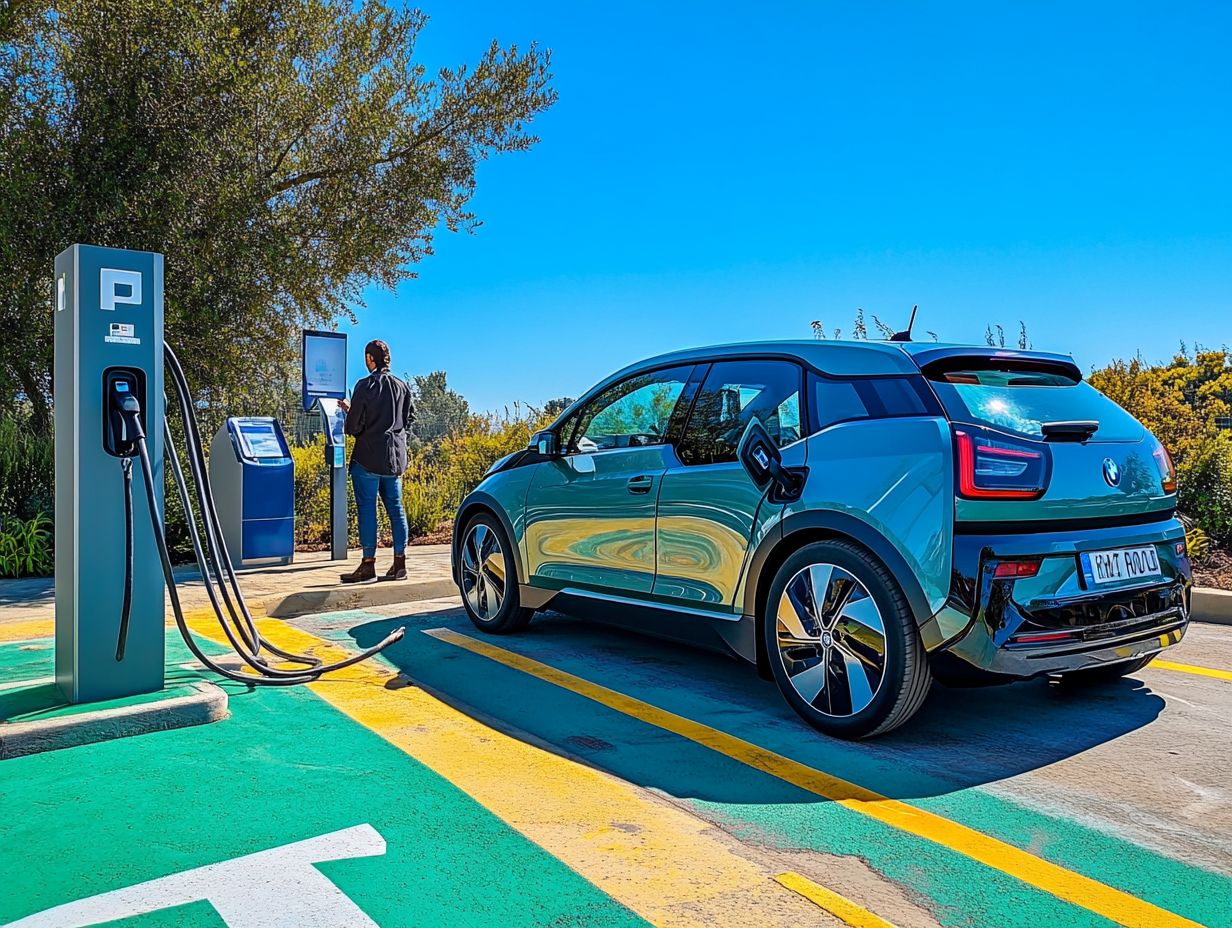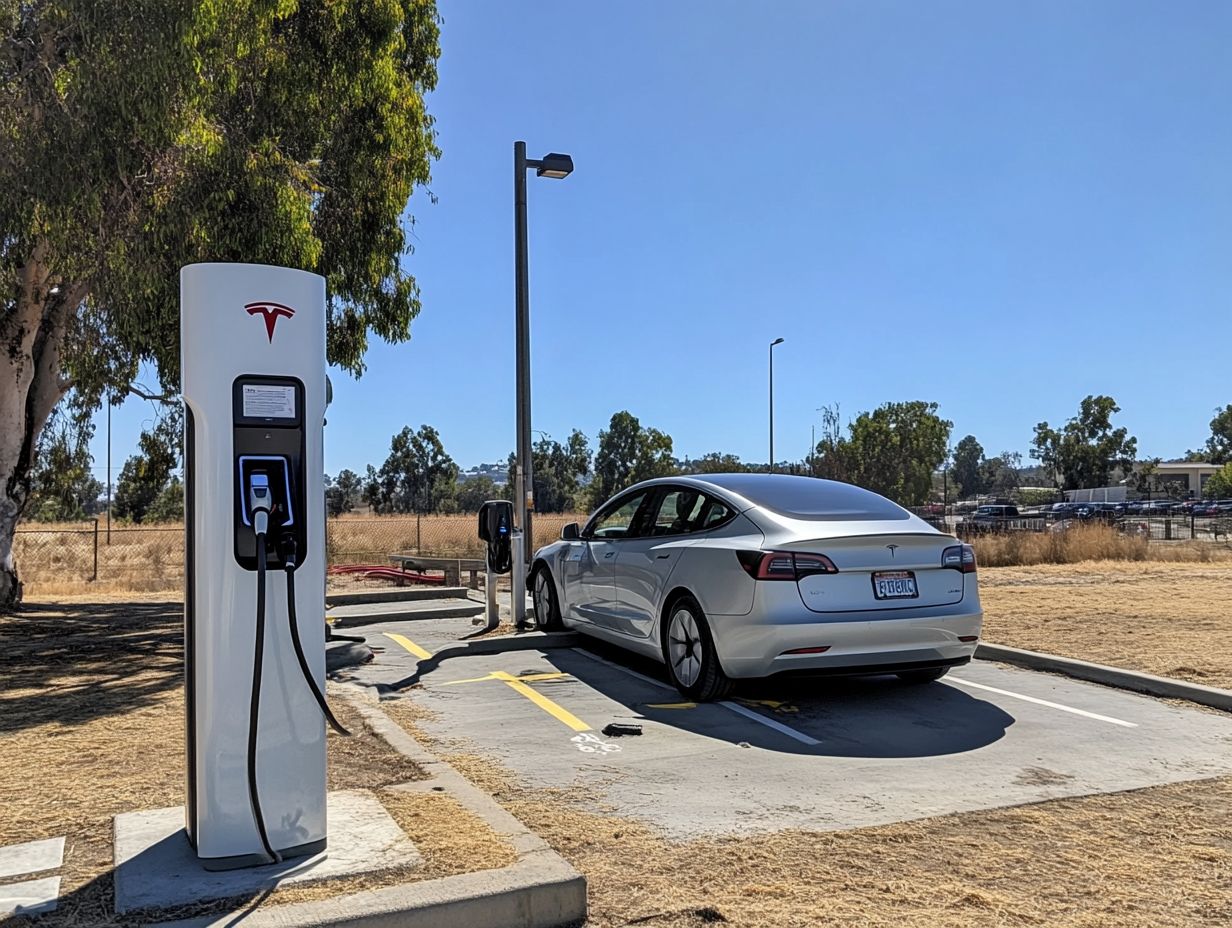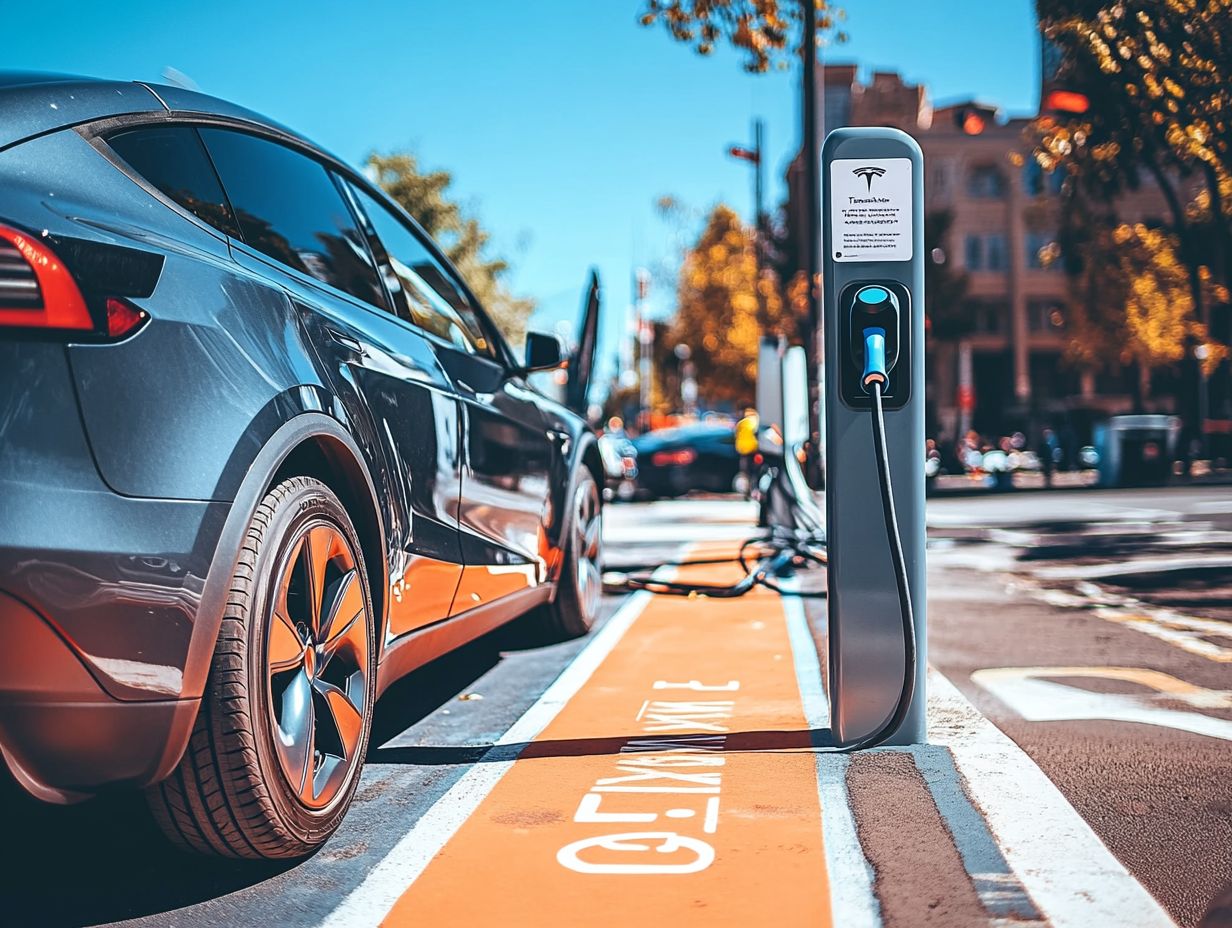What Are the Legal Requirements for EV Charging Stations?
As electric vehicles (EVs) gain traction, the demand for EV charging stations is skyrocketing. Whether you’re a business owner considering charging solutions or a homeowner weighing your options, understanding EV charging stations is crucial.
This article explores what EV charging stations are, the legal requirements to consider, the various types available, and the processes involved in installation and maintenance. With the right knowledge, you can confidently navigate the evolving world of EV charging.
Contents
- Key Takeaways:
- Overview of EV Charging Stations
- Legal Requirements for EV Charging Stations
- Types of EV Charging Stations
- Installation Process for EV Charging Stations
- Maintaining and Operating EV Charging Stations
- Frequently Asked Questions
- What Are the Legal Requirements for EV Charging Stations?
- Do EV charging stations need to follow any specific safety standards?
- Are there any zoning restrictions for installing EV charging stations?
- Are there any environmental regulations for EV charging stations?
- Do I need any special permits to install EV charging stations at my business?
- Are there any accessibility requirements for EV charging stations?
Key Takeaways:

- Permits and regulations are necessary when installing EV charging stations. Compliance with accessibility requirements ensures fair access for all users.
- There are different types of EV charging stations, including Level 1, Level 2, and DC fast charging. Each has its own benefits and installation requirements.
- The installation process for EV charging stations involves various steps and considerations, such as location, power supply, and potential obstacles.
Overview of EV Charging Stations
The Biden-Harris Administration is leading the charge to establish a comprehensive EV charging network across the nation. The goal is to install millions of electric vehicle chargers and public charging ports. This initiative enhances access to clean transportation and aligns with the Bipartisan Infrastructure Law.
This effort not only focuses on job creation in domestic manufacturing but also addresses the climate crisis by promoting electric vehicle adoption. With major automakers like Tesla and General Motors fully committed to EV sales, the need for a robust charging infrastructure is urgent and essential for our future.
What are EV Charging Stations?
EV charging stations are specialized facilities designed to provide electric vehicle chargers. They deliver power to electric vehicles (EVs), allowing them to recharge their batteries efficiently.
These stations are pivotal in enhancing the charging infrastructure necessary for the growing electric vehicle market. You’ll encounter various types, including:
- Level 1 chargers, commonly found in homes,
- Faster Level 2 chargers, ideal for public areas,
- High-speed DC fast chargers, designed for quick stops during long journeys.
By ensuring a robust network of charging solutions, these stations facilitate the wider adoption of electric vehicles and ease range anxiety among users. They also help create a more sustainable environment by reducing emissions, making them a vital component in the transition to greener transportation.
Legal Requirements for EV Charging Stations
Establishing EV charging stations involves following specific rules. This includes securing necessary permits and adhering to regulations set by governmental bodies like the Department of Transportation and the Department of Energy.
These guidelines are crucial for ensuring a safe and accessible charging infrastructure. By meeting these compliance standards, you contribute to a sustainable future.
To learn more about getting involved in the EV charging movement, consider exploring local initiatives or reaching out to community organizations.
Permits and Regulations

Obtaining permits and adhering to regulations is essential for the successful deployment of EV charging stations. It requires compliance with guidelines set by organizations like the Federal Highway Administration (FHWA) and policies influenced by the Inflation Reduction Act.
Navigating local, state, and federal regulations may feel complex. However, making your installations safe, accessible, and effective is essential to meet the growing demand for electric vehicle support. The FHWA establishes standards that make it easier to travel between states and encourage infrastructure development. Meanwhile, the Inflation Reduction Act provides financial incentives to accelerate the presence of charging stations in your community.
These regulatory frameworks also simplify the permitting process and enhance investment opportunities. This ultimately helps create a robust network of EV charging stations that supports both you, the consumer, and the environment.
Accessibility Requirements
Accessibility requirements for EV charging stations are vital to ensure that everyone, including individuals with disabilities, has equal access to public charging ports, in accordance with the standards set by the Americans with Disabilities Act (ADA).
These requirements include various design standards and features. They involve providing sufficient clearance space around charging stations, ensuring that controls are easily reachable for wheelchair users, and incorporating clear, understandable signage.
Accessible charging stations should be strategically placed near accessible pathways and parking areas to remove unnecessary barriers. By prioritizing these design principles, you can support transportation planners and EV manufacturers in creating a more equitable clean transportation landscape, encouraging participation from all individuals and fostering a shift towards sustainable energy solutions.
Making charging stations accessible benefits everyone, not just those with mobility challenges. It improves the experience for our whole community.
Types of EV Charging Stations
You ll find a variety of EV charging stations tailored to meet distinct charging needs for electric vehicles. These include Level 1, Level 2, and DC Fast Charging stations, each offering different power levels and charging speeds.
Level 1, Level 2, and DC Fast Charging
Level 1 charging is the slowest option for your electric vehicle, typically utilizing a standard household outlet. In contrast, Level 2 charging offers a significant speed boost, working with a 240-volt outlet. For quick recharges, DC Fast Charging is the fastest way to replenish your battery, getting you back on the road in no time!
Each charging level meets specific needs. They are invaluable based on your lifestyle. Level 1 is perfect for overnight charging at home, especially for those who can enjoy longer dwell times. Level 2 is ideal for urban settings, where you might need a quick top-up during the day. Although it often requires a dedicated installation, it can be set up conveniently in residential garages or public charging stations.
For long-distance travel, DC Fast Charging becomes your best friend, allowing you to swiftly replenish your battery during road trips. However, it generally requires more robust infrastructure and tends to come with a higher cost per charge.
Understanding these differences is essential for maximizing the efficiency and convenience of owning an electric vehicle.
Installation Process for EV Charging Stations

The installation process for EV charging stations encompasses several essential steps and considerations. You ll need to conduct a thorough site assessment, evaluate the existing electrical infrastructure, and ensure compliance with relevant standards.
This meticulous approach guarantees the safe and efficient deployment of charging infrastructure while utilizing the strength of renewable energy sources.
Steps and Considerations
Key steps in installing EV charging stations include conducting a thorough site assessment, evaluating your existing electrical infrastructure, and ensuring compliance with local regulations and safety standards.
To start, a comprehensive site assessment allows you to identify the best locations for installation, considering factors like accessibility and traffic flow.
Next, an in-depth electrical evaluation is essential. This step determines whether your current electrical systems can handle the additional load of the charging stations. You ll need to examine the capacity of existing circuits and identify any necessary upgrades to guarantee optimal performance.
Don t overlook the importance of adhering to regulatory requirements. Understanding local codes and safety standards is crucial to avoid potential fines and enhance safety for users. By carefully addressing these areas, you can ensure a successful and sustainable installation.
Maintaining and Operating EV Charging Stations
To effectively maintain and operate EV charging stations, it is essential for you to adhere to best practices that guarantee reliability and user satisfaction.
This approach also enables you to tackle the common challenges that may arise within the evolving landscape of charging infrastructure.
Best Practices and Common Challenges
Maintaining EV charging stations effectively involves best practices like conducting regular maintenance checks and communicating clearly with users.
Monitoring usage patterns can enhance performance. You might encounter common challenges such as equipment malfunctions and diverse user needs.
To ensure the longevity and efficiency of these essential resources, focus your routine inspections on the condition of charging cables, the integrity of connectors, and necessary software updates.
Engaging with customers through feedback surveys not only cultivates a sense of community but also reveals opportunities for enhancing service delivery.
Leverage performance analytics to track peak usage times and pinpoint potential bottlenecks. Tackling challenges like equipment breakdowns can be managed by establishing a rapid response team, guaranteeing that all stations remain operational to meet the increasing demand from electric vehicle users.
Frequently Asked Questions

What Are the Legal Requirements for EV Charging Stations?
The legal requirements for EV charging stations vary depending on the location and jurisdiction. However, some commonly required elements include building permits, electrical permits, and adherence to local and national building codes.
Do EV charging stations need to follow any specific safety standards?
Yes, EV charging stations must adhere to safety standards set by the National Electrical Code (NEC) and Occupational Safety and Health Administration (OSHA). This includes proper grounding, installation of appropriate circuit breakers, and protection against electrical shock.
Are there any zoning restrictions for installing EV charging stations?
Some cities and municipalities may have zoning restrictions for the installation of EV charging stations. Check with local authorities to ensure you meet all requirements before installing a charging station.
Are there any environmental regulations for EV charging stations?
In some areas, EV charging stations may be subject to environmental regulations. This can include requirements for proper disposal of hazardous materials, such as batteries, used in the charging process.
Do I need any special permits to install EV charging stations at my business?
Yes, installing EV charging stations at a business may require additional permits, such as a commercial electrical permit. Consult with a licensed electrician and local authorities to ensure all necessary permits are obtained.
Are there any accessibility requirements for EV charging stations?
Yes, EV charging stations must comply with the Americans with Disabilities Act (ADA) to ensure accessibility for individuals with disabilities. This may include features such as designated accessible parking spaces and proper signage.
Ready to install your EV charging station? Contact your local authorities today!






